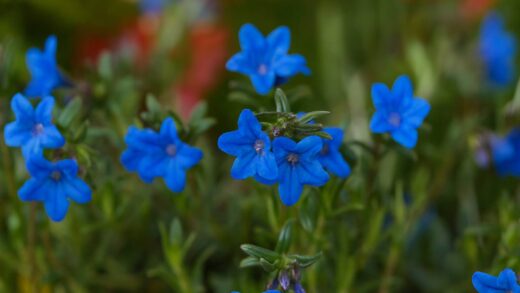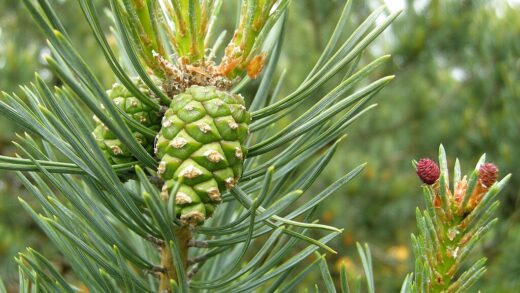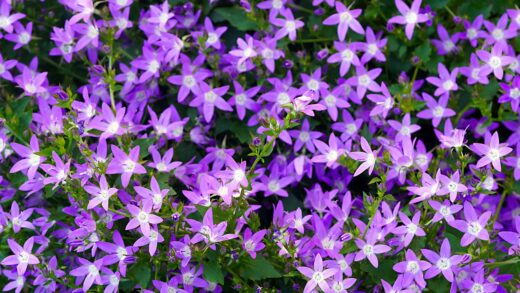While the silk acacia is a generally robust and resilient tree, it is not entirely immune to the pressures of pests and diseases. Proactive management and a keen eye for early symptoms are the best defense against potential problems. A healthy, well-sited tree that is not under stress from drought, overwatering, or nutrient imbalances will naturally be more resistant to attack. Therefore, the principles of proper cultural care form the foundation of any effective pest and disease management strategy. When problems do arise, a measured and informed response is crucial for the tree’s long-term health.
The most significant threat to the silk acacia is a devastating soil-borne fungal disease known as Mimosa Wilt. This disease is so impactful that it has dictated planting choices in many regions, making the understanding of its symptoms and prevention paramount for any grower. Beyond this single, formidable pathogen, the tree can also be affected by a range of less severe fungal leaf spots and cankers, though these are typically more cosmetic than life-threatening. Recognizing the difference between a minor issue and a fatal disease is a critical skill.
On the pest front, the silk acacia has a few key adversaries. The most notable is the mimosa webworm, a caterpillar that can defoliate portions of the tree and create unsightly nests. Other sucking insects, such as scale and spider mites, can also become problematic, particularly on trees that are already stressed. An integrated pest management (IPM) approach, which emphasizes monitoring and using the least toxic control methods first, is the most sustainable and environmentally sound way to handle these insect pests.
This integrated approach to health care requires a shift in perspective from simply reacting to problems to actively fostering a healthy environment where the tree can thrive. This includes promoting biodiversity in the garden to encourage natural predators of pests, maintaining good sanitation by removing diseased material, and avoiding practices that can injure the tree and create entry points for pathogens. By acting as a vigilant steward of the tree’s health, a gardener can successfully navigate the challenges posed by diseases and pests.
Fungal diseases affecting the silk acacia
By far, the most serious disease to affect the silk acacia is Mimosa Wilt, caused by the fungus Fusarium oxysporum f. sp. perniciosum. This pathogen is a vascular wilt, meaning it invades the tree’s water-conducting tissues (the xylem). The fungus typically enters through the roots, often via wounds, and spreads systemically throughout the tree. As it grows, it clogs the xylem, physically blocking the transport of water and nutrients from the roots to the canopy, which leads to the characteristic wilt symptoms.
More articles on this topic
The symptoms of Mimosa Wilt are dramatic and often progress rapidly. An infected tree will suddenly show wilting and yellowing leaves on one or more branches, which may at first appear similar to drought stress. However, the wilting does not improve with watering. As the disease progresses, more of the canopy will be affected, with leaves turning brown and dropping prematurely, leading to the death of entire branches. A key diagnostic feature is a dark, ring-like stain that can be seen in the sapwood if an infected branch is cut in cross-section.
Unfortunately, there is no chemical cure for a tree infected with Mimosa Wilt. Once the fungus is established in the tree’s vascular system, the decline is irreversible, and the tree will usually die within a year. Management, therefore, is entirely focused on prevention. The fungus can persist in the soil for many years, so it is crucial not to plant a new silk acacia in a location where one has previously died from the disease. Avoiding any mechanical injury to the roots or trunk is also vital, as wounds provide an easy entry point for the pathogen.
Due to the prevalence of this disease, plant breeders have worked to develop wilt-resistant cultivars of Albizia julibrissin. Varieties such as ‘Union’ and ‘Charlotte’ have shown significant resistance to the Fusarium pathogen. When planting a new silk acacia, especially in an area where the disease is known to be present, selecting one of these resistant cultivars is the most effective preventative measure available and is highly recommended for ensuring the longevity of the tree.
Common insect pests and their damage
The most conspicuous pest of the silk acacia is the mimosa webworm (Homadaula anisocentra). The adult form is a small, gray moth, but the damage is caused by its larvae, which are small, grayish-brown caterpillars. These larvae feed on the foliage and characteristically tie leaves and leaflets together with strands of silk, creating messy, web-like nests, usually at the tips of the branches. Inside these protective webs, the caterpillars feed, causing the enclosed foliage to turn brown and die, which can be quite unsightly.
More articles on this topic
While a heavy infestation of mimosa webworms can make a tree look very ragged and may cause some stress due to defoliation, it is rarely fatal to an otherwise healthy, mature tree. There are typically two generations of webworms per year, with the second generation in late summer often causing the most noticeable damage. Management can begin with mechanical control on smaller trees, where the webbed nests can be physically pruned out and destroyed as soon as they are spotted. This can significantly reduce the pest population before it expands.
Another group of pests that can affect the silk acacia are sucking insects, such as various species of scale insects and spider mites. Scale insects appear as small, immobile bumps on the stems and leaves and feed by sucking sap from the plant, which can weaken the tree and cause yellowing of leaves. Spider mites are tiny arachnids that are difficult to see with the naked eye, but their presence is often indicated by fine webbing and a stippled, faded appearance on the leaves. They thrive in hot, dry conditions.
Control of sucking insects often starts with a strong spray of water from a hose, which can dislodge many of them. For more persistent infestations, horticultural oils or insecticidal soaps are effective and relatively low-impact control options. These products work by smothering the pests and are most effective when applied thoroughly to all surfaces of the plant. Encouraging natural predators like ladybugs and lacewings, which feed on these pests, is also a key component of a successful long-term management strategy.
An integrated pest management approach
Integrated Pest Management (IPM) is a holistic and sustainable approach that prioritizes the long-term health of the ecosystem over the simple eradication of pests. The first principle of IPM is prevention. This involves selecting resistant cultivars when available, such as wilt-resistant silk acacias, and providing optimal growing conditions. A tree that is healthy and thriving is naturally better equipped to fend off and recover from pest and disease attacks than a tree that is stressed by poor conditions.
Regular monitoring is the second pillar of IPM. This means routinely inspecting the tree for early signs of trouble. By catching a pest infestation or a disease symptom in its earliest stages, the available control options are broader, easier, and less toxic. For example, pruning out a single webworm nest is much simpler than trying to spray an entire tree that is heavily infested. This “early detection, early response” mantra is central to the IPM philosophy and minimizes the need for widespread chemical intervention.
When a pest problem is identified and action is required, IPM dictates a tiered response, starting with the methods that pose the least risk to the environment and non-target organisms. This begins with cultural and mechanical controls, such as adjusting irrigation practices or physically removing pests. If these methods are insufficient, the next step is to consider biological controls, which involves the use of natural predators, parasites, or pathogens to control the pest population. For instance, releasing lacewing larvae can be an effective way to manage an aphid or mite problem.
Chemical controls, particularly broad-spectrum synthetic pesticides, are used only as a last resort in an IPM program. When they are necessary, the most targeted and least toxic option should be chosen. For example, using a product like Bacillus thuringiensis (Bt) to control webworms is preferable to a broad-spectrum insecticide because Bt specifically targets caterpillars and is harmless to bees, beneficial insects, and other animals. This careful, considered use of chemicals protects the broader garden ecosystem while effectively managing the target pest.
Environmental and abiotic disorders
Not all problems affecting a silk acacia are caused by living organisms. Abiotic disorders, which are caused by non-living environmental or cultural factors, are also common and can often be mistaken for diseases. For example, frost damage is a frequent issue in colder climates or after a late spring frost. The tender new growth is particularly vulnerable and can be killed, turning black or brown. This is not a disease, and the solution is to simply wait until the danger of frost has passed and then prune out the damaged tissue.
Sunscald is another abiotic issue that can affect the trunk, especially on young trees with thin bark. It occurs during the winter when the sun warms the southern or southwestern side of the trunk during the day, causing the cells to become active. When the sun sets, the temperature plummets rapidly, freezing and killing the active cells, resulting in a patch of dead, sunken, or cracked bark. This wound can then become an entry point for diseases or boring insects. Using a commercial tree wrap to protect the trunks of young trees during the winter can prevent this problem.
Nutrient deficiencies, as discussed previously, can cause symptoms like chlorosis that mimic those of a disease. An iron deficiency, for example, causes a distinct pattern of yellowing that could be misdiagnosed. Similarly, an excess of certain salts in the soil or irrigation water can lead to leaf scorch, where the margins of the leaves turn brown and appear burnt. A proper diagnosis is key; adding fungicide to a tree suffering from a nutrient deficiency will have no effect and will not address the root cause of the problem.
Lastly, mechanical damage is a significant source of stress and a major entry point for pathogens. Wounds from lawnmowers or string trimmers at the base of the trunk are extremely common and can be devastating. These injuries damage the cambium layer just beneath the bark, disrupting the flow of water and nutrients and creating a perfect opening for wood-boring insects and decay fungi. Maintaining a wide, mulch-covered, grass-free area around the base of the tree is the best way to prevent this type of entirely avoidable damage.


















